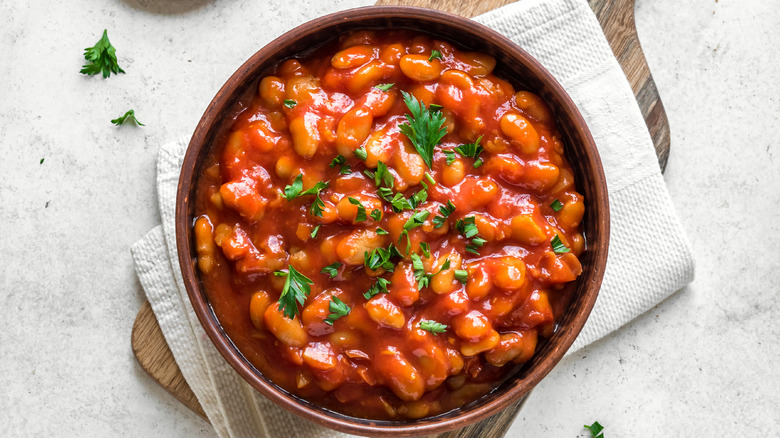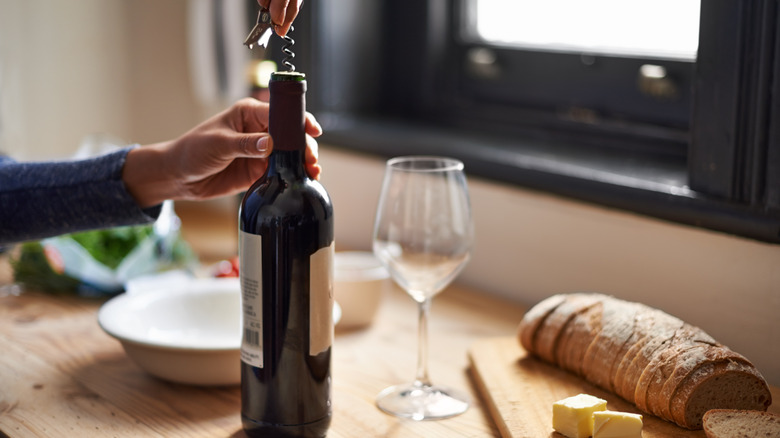Why You Should Never Cook Dried Beans In Wine
Dried beans can be intimidating to cook if you lack the proper know-how. While you might think that rock-hard pintos or chickpeas can simply be tossed into a pot and left to boil, the reality is that crafting a perfectly cooked bean is way more complex. Along with buying the freshest legumes possible, soaking them the appropriate amount of time, and seasoning them accordingly, another critical aspect of the process is knowing which ingredients can be added to the pot during cooking and which should be omitted. Although there is no shortage of ways to infuse deliciousness into the starchy and mellow tasting seeds, it's wise to steer clear of wine — and any other acidic ingredient for that matter. Whether it's red, white, or rosé, wine is one liquid that should never be used to simmer beans.
Despite their seemingly tough demeanor, beans are actually quite sensitive. Legumes are affected by fluctuations in pH, so when they are placed in an alkaline environment, their cell walls begin to rapidly break down. Yet under acidic conditions the opposite is true, as acidity prevents pectin in the skins from dissolving and instead triggers them to tighten, which inhibits the absorption of water. Because of this, boiling and braising beans in a highly acidic solution like wine should be avoided.
Mixing booze and beans the right way
It might sound like we're contradicting ourselves, but beans and acidic ingredients can go together — they just need to be introduced at the right moment. Rather than fret over dried legumes that aren't cooking and, therefore, softening fast enough, pour in wine towards the end of cooking. Once bean skins have loosened and their centers have become creamy, a splash can be added into your recipe without negatively impacting quality or cook time. Alternatively, you could cook an acidic, wine-laden sauce separately from legumes, combining the two components just before serving.
Another thing to bear in mind is that when it comes to canned beans, none of these rules apply. Since cans of cannellinis, lentils, and the like will already be cooked, wine can be incorporated at any time during the dish making process. Naturally, it's worth remembering that it will take some time for the alcohol to reduce.
If you aren't totally convinced about cooking beans with wine, but want to impart depth, look to other flavorful cooking liquids. Water that's been liberally seasoned with salt is a good place to start, however, you can easily do better. Add vegetable scraps, herbs, chili flakes, lardons, or a cheese rind to create a rich broth. Likewise, a ready-made stock (vegetable, seafood, beef, or poultry) will infuse all sorts of earthy, savory, and vegetal flavors into beans. That said, a touch of wine can still help round out flavors — just saying!

